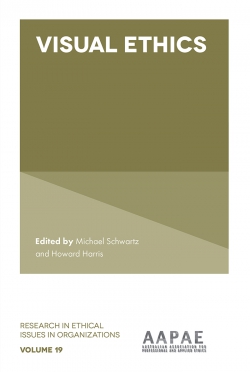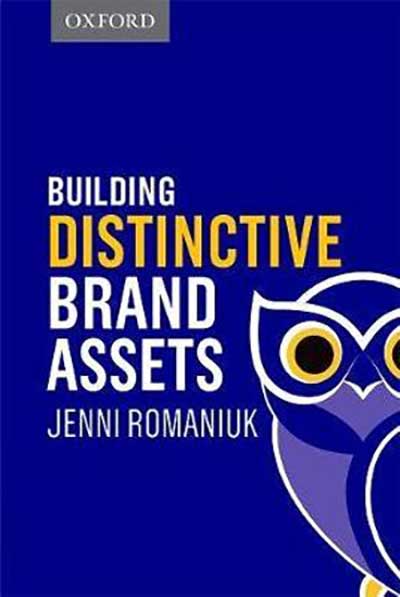The latest books from UniSA researchers
- Storytelling Through Photos: A Photovoice Lens on Ethical Visual Research
- Building Distinctive Brand Assets
Storytelling Through Photos: A Photovoice Lens on Ethical Visual Research

A picture is worth a thousand words, or so says the age-old idiom – but how can governments and organisations use pictures to ethically capture the voices of the disadvantaged or silenced?
Visual Ethics is volume 19 in Emerald Publishing’s Research in Ethical Issues in Organizations (REIO) series, investigating the implications of our visual world on organisational and personal lives.
In the chapter Storytelling Through Photos: A Photovoice Lens on Ethical Visual Research, UniSA’s Dr Janine Pierce explores the ethical considerations of photovoice – a qualitative research process using pictures to capture lives, experiences and issues through photos and associated written stories.
“Photovoice empowers community members, giving them the chance to tell their stories as a voice to decision makers,” Dr Pierce says.
“The photovoice method involves giving participants cameras to take photos on loosely-worded themes and to write or describe accompanying comments in a diary.”
The book chapter highlights the ethical implications and responsibilities involved in using photovoice and advises organisations on desirable practice to establish photovoice as an empowering tool to engage community and to act as a catalyst for social change.
Dr Pierce proposes feasible strategies for government and non-government organisations to use photovoice for ethically communicating and highlighting the perspectives and voices of those who are otherwise silenced.
The chapter is part of Visual Ethics Vol: 19, which is co-edited by Associate Professor Howard Harris from UniSA and Associate Professor Michael Schwartz from RMIT.
Storytelling Through Photos: A Photovoice Lens on Ethical Visual Research features in Visual Ethics Vol:19, part of the REIO series, available in hardback and online.
Building Distinctive Brand Assets

Based on decades of research from UniSA’s Ehrenberg-Bass Institute for Marketing Science, a new book – Building Distinctive Brand Assets – from Professor Jenni Romaniuk is set to become a ‘bible’ for businesses wanting to build a solid brand strategy.
“We have written the book to help combat the out-of-date brand strategies often advised to marketers struggling with their brand’s identity,” Prof Romaniuk says.
She says the book will guide executives to set up a long-term strategy for building a strong brand identity, and will explain how to establish and protect distinctive assets.
“Despite advances in our understanding of how the brain and buyer-behaviour work, much of the advice on building a strong brand identity is tied up in folklore,” Prof Romaniuk says.
“This book shows marketers how to use their brand’s identity to its best advantage and harness the value from underdeveloped and under-leveraged assets.”
Distinctive assets are the non-brand name triggers that remind category buyers of your brand – such as colours, logos, characters, jingles, fonts, pack shapes or taglines/slogans.
In the book, Prof Romaniuk explains the important role these assets play in building mental and physical availability and the need for marketers to develop and protect distinctive assets over the long term.
“While it’s tempting to tinker with your brand – just don’t!” Prof Romaniuk says.
“Changing your brand’s identity is like inviting someone around for dinner and then moving house without telling them. They aren’t going to turn up.”
As well as a host of examples demonstrating the evidence, Building Distinctive Brand Assets provides practical guidelines to help brand managers make smarter marketing decisions and ends with the four ‘commandments’ of building brand assets.
Across the book’s three sections – creation, implementation and management – Prof Romaniuk answers key questions, and explores strategy, tactics and insights from a wide range of asset types including celebrities, tagline and jingles.
Building Distinctive Brand Assets is available for purchase in major retailers internationally. For more information visit www.MarketingScience.info/building-distinctive-brand-assets
Other Stories
- Painless needles on the way for vaccinations
- Hi. How can I help you? Health clinic embraces the robot age
- Virtual health coach ‘Paola’ will help you get fit and eat well
- Carbon-free renewable energy solution to ‘heat up’ industry
- From the Vice Chancellor
- Achievements and Announcements
- The technology to take a jury into a 3D crime scene
- Oscars 2019 plays it safe with Green Book, lacks enlightened thinking
- Organ-on-a-chip technology to reduce side effects of radiotherapy
- Find out about UniSA’s dedicated student support services (Video)
- International defence research lab with France planned for Adelaide
- New innovation hub in Whyalla to nurture regional startups
- The latest books from UniSA researchers
- In Pictures




